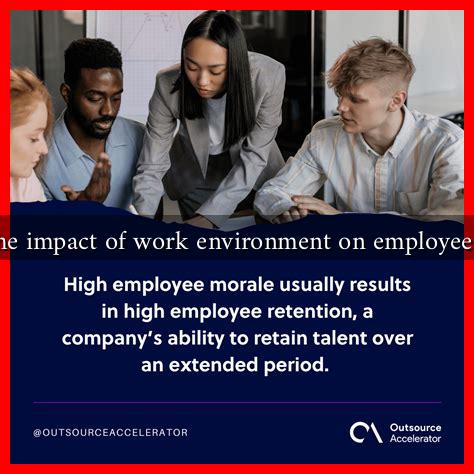-
Table of Contents
The Impact of Work Environment on Employee Retention
In today’s competitive job market, organizations are increasingly recognizing the importance of a positive work environment in retaining their employees. A conducive work environment not only enhances employee satisfaction but also significantly impacts retention rates. This article explores the various facets of the work environment that influence employee retention, supported by research, statistics, and real-world examples.
Understanding the Work Environment
The work environment encompasses the physical, social, and cultural aspects of a workplace. It includes factors such as office layout, company culture, management style, and employee relationships. A positive work environment fosters collaboration, creativity, and productivity, while a negative one can lead to high turnover rates.
Key Factors Influencing Employee Retention
Several elements of the work environment play a crucial role in determining whether employees choose to stay with an organization. Here are some of the most significant factors:
- Physical Workspace: The design and comfort of the physical workspace can greatly affect employee morale. Open spaces, natural light, and ergonomic furniture contribute to a more pleasant working atmosphere.
- Company Culture: A strong, positive company culture that aligns with employees’ values can enhance job satisfaction. Organizations that promote inclusivity, diversity, and respect tend to retain employees longer.
- Management Style: Supportive and approachable management fosters trust and loyalty among employees. Leaders who provide regular feedback and recognize achievements can significantly boost retention rates.
- Work-Life Balance: Companies that prioritize work-life balance through flexible working hours and remote work options tend to have lower turnover rates. Employees are more likely to stay when they feel their personal lives are respected.
- Opportunities for Growth: Providing employees with opportunities for professional development and career advancement can enhance their commitment to the organization.
Statistics and Case Studies
Research supports the notion that a positive work environment is crucial for employee retention. According to a study by Gallup, organizations with engaged employees experience 25% to 65% lower turnover rates compared to those with disengaged employees. Furthermore, a report from the Society for Human Resource Management (SHRM) indicates that 47% of employees cite a lack of career development opportunities as a primary reason for leaving their jobs.
One notable case study is that of Google, which is renowned for its innovative work environment. The company offers a range of employee benefits, including flexible work hours, wellness programs, and opportunities for professional growth. As a result, Google consistently ranks among the top companies for employee retention, with an annual turnover rate of just 13% compared to the industry average of 20%.
Creating a Positive Work Environment
Organizations looking to improve employee retention should focus on creating a positive work environment. Here are some strategies to consider:
- Solicit Employee Feedback: Regularly gather feedback from employees about their work environment and make necessary adjustments based on their input.
- Invest in Employee Development: Offer training programs, workshops, and mentorship opportunities to help employees grow professionally.
- Foster Open Communication: Encourage open dialogue between management and employees to build trust and transparency.
- Promote Work-Life Balance: Implement policies that support flexible working arrangements and respect employees’ personal time.
- Recognize and Reward Contributions: Acknowledge employees’ hard work and achievements through rewards and recognition programs.
Conclusion
The impact of the work environment on employee retention cannot be overstated. A positive work environment enhances job satisfaction, fosters loyalty, and ultimately leads to lower turnover rates. By focusing on key factors such as physical workspace, company culture, management style, work-life balance, and opportunities for growth, organizations can create an environment that not only attracts talent but also retains it. As the job market continues to evolve, prioritizing a positive work environment will be essential for organizations aiming to thrive in the long term.
For further reading on employee retention strategies, you can visit SHRM’s Employee Retention Strategies.

